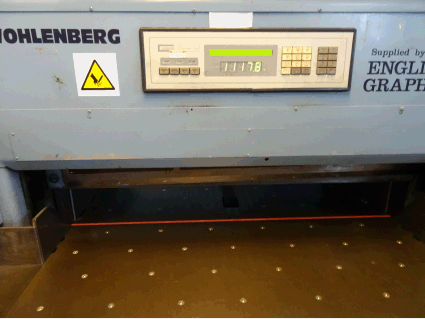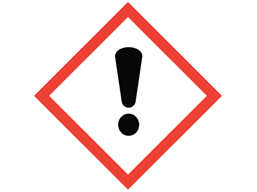Earlier this week, a man named Alan Dykes was sentenced to eight months in prison and ordered to pay £7,660 in costs. His crime? Failing to prevent people from being exposed to asbestos.
Mr Dykes - who owned a building that was rented out to businesses as office space - pleaded guilty to five health and safety breaches at Bristol Magistrates Court on Wednesday. Health and safety inspectors had previously observed "blocked fire exits" and "serious electrical hazards" in Alan Dykes's building, but perhaps the most damning black mark against his name concerned his "failing to manage asbestos to prevent occupants and visitors breathing in fibres".
In case you're unfamiliar with the hazards of asbestos, here are a few facts and figures for you:
- Exposure to asbestos fibres can lead to a number of life-threatening diseases, including mesothelioma and lung cancer.
- Most asbestos-related diseases develop slowly, and are often incurable by the time they are diagnosed.
- According to the HSE, asbestos kills rougly 5,000 workers ever year.
The use of asbestos has been completely banned in the UK since December 2003, but it still turns up all over the country, often in surprising places (such as schools, underground, and even Buckingham Palace!)
Dealing with asbestos
If asbestos is discovered in a building, the affected area should be cordoned off using asbestos warning tape to prevent people from being exposed to the fibres.
Additionally, warning signs should be put up to warn of the danger and remind everyone that asbestos must not be disturbed except by qualified individuals wearing the appropriate PPE.
Until the asbestos has been removed by trained professionals, all other people should be prohibited from entering the affected area.
If there is asbestos on your premises and you fail to do anything about it, you could end up facing a hefty fine or even time in jail. Don't let yourself end up like Alan Dykes - make sure your workplace is free from asbestos and safe for all who use it!
Related pages:

Slips and trips were the single most common cause of major workplace injuries in Britain last year. Just under 2% of all UK workers were injured in a slip or trip over the course of 2014, with an estimated 986,000 working days lost in total throughout the year.
Clearly, more must be done to prevent slips and trips in the workplace. If you're a business owner, you can do your part by putting up a trip hazard sign wherever you and your employees are at risk of slipping, tripping or falling; common trip hazards include:
- Steps and uneven surfaces
- Trailing cables or wires
- Loose floorboards/carpeting
- Dimly-lit areas
- Any other obstacles that might cause an accident
Visit our Trip Hazard Signs department to browse our full range of safety signs relating to slips, trips and falls. Alternatively, if you can't find the trip hazard sign you're looking for, feel free to contact Label Source and we'll do our best to meet your requirements.

We at Label Source consider ourselves the asset label specialists. Not only do we sell a huge variety of asset tags and barcode labels, we also pride ourselves on being able to answer practically any question a customer might have about asset labelling and the products required to do it.
Here are a few of the most common queries:
Q: What are asset labels?
A: Asset labels are numbered tags that company owners can use to keep track of their assets. Each asset label has its own unique number, making it easy to identify and monitor the labelled items.
Q: Why do people use asset labels?
A: Asset labels are useful in a number of different ways. By making assets individually identifiable, they speed up stock/inventory control and deter thieves. Asset labels are particularly well-suited to moveable assets (e.g. computers, laptops, tools), especially if said assets are frequently taken off the premises and into the field.
Q: Can I have my company's logo on my asset labels?
A: Absolutely! We offer a variety of customisation options to complement our standard asset labelling range - many of our clients have found that the inclusion of a logo helps to improve brand awareness and improve the identifiability of marked items.
Q: What are asset labels made of?
A: Asset labels come in many different materials, each with its own properties. Most of the asset tags we supply here at Label Source are made of self-adhesive vinyl, but we also offer foil asset labels, which have a wider operating temperature range. You may also wish to invest in destructible or tamper-evident asset labels; these tags come with additional security features to prevent them from being cleanly removed by thieves.
Click here to browse Label Source's full range of asset marking products, or contact us if you have any other questions about asset labels and their uses.
Under PUWER (Provision and use of work equipment regulations 1998) all such equipment, including machinery, tools, plant and appliances, should be suitable and safe for use, should have been inspected and maintained, should have correct protective devices, and be operated by adequately trained staff.

The dangers and hazards relating to operating this equipment should be clearly identified, and our range of safety labels and signs can be used for this purpose. These health and safety risks can include from pinch, crush, trap and entanglement hazards, operating temperatures such as hot surfaces, or high or low ambient temperatures, chemical dangers (eg corrosive or toxic), and various other risks from electricity, flammability, lasers, radiation, and biological hazards.
In addition Label Source supply a wide variety of bespoke printed labels and signs incorporating combinations of safety symbols and custom text. For further information please contact us.

Britain worked itself up into a lather last week when it was announced that, under new EU legislation, the makers of Fairy Liquid would have to print a GHS harmful/irritant warning on all bottles starting from June 2017. News outlets like the Daily Mail were quick to paint this story as yet another example of Brussels bureaucrats terrorising the British way of life - here's the headline from www.dailymail.co.uk:
Procter and Gamble, the manufacturers of Fairy Liquid, have expressed their anger at this ruling, which they worry will discourage people from using their product and contradict the brand's long-established 'soft on skin' image.
However, it should be pointed out that washing-up liquid (including "beloved and quintessentially British brand" Fairy Liquid) is, in fact, hazardous if misused. As the Mail themselves point out, the required GHS label (a black exclamation mark inside a red border) will warn consumers that Fairy Liquid may cause "eye irritation, respiratory tract irritation, and have narcotic effects". All of which is true - even soft, kind Fairy Liquid should not be ingested, inhaled, or allowed to make contact with the eyes.
The potential hazards of washing-up liquid need to be clearly marked on the products to promote safe use, and this is all that the new EU legislation aims to achieve. Instead of criticising the move, news outlets would do better to educate their readers as to the exact meaning of GHS labels and the ways in which labelled products can and can't be safely used. It's time to stop criticising health and safety culture and start helping to keep people safe!
See also: